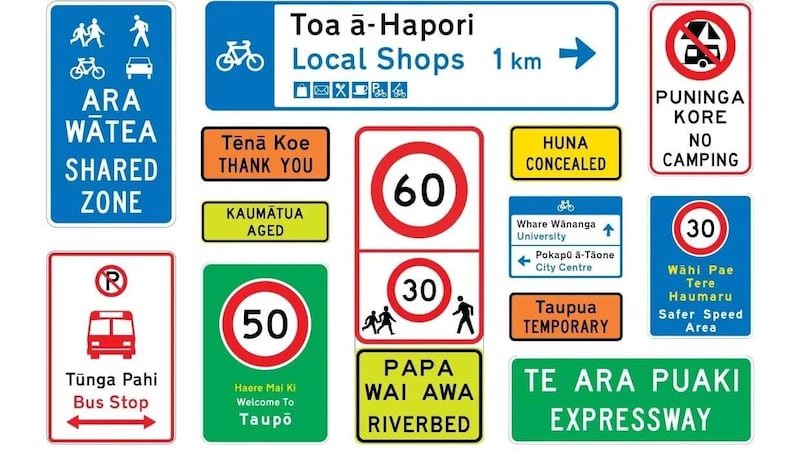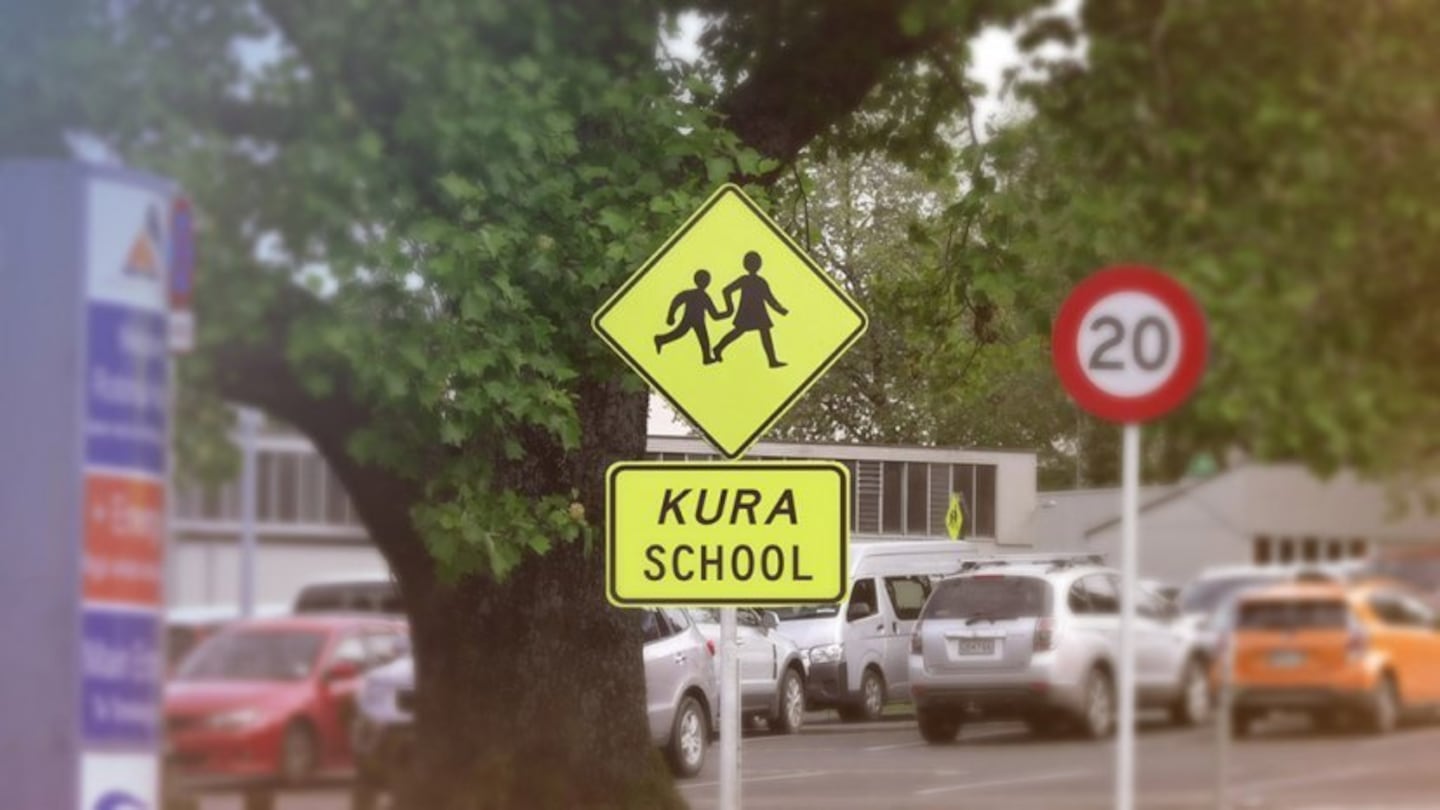This article was first published by Stuff.
There’s no fear and loathing in Epsom for “tēnā koe” (thank you), and Māngere is chill about “tūnga pahi” (bus stop) too.
A Stuff tiki tour testing the community’s appetite for proposed bilingual road signs, including the heart of ACT leader David Seymour’s Epsom electorate, has revealed strong support for making reo Māori part of our everyday journeys.
It comes as Aotearoa awaits a decision from Transport Minister Simeon Brown on the future of He Tohu Huarahi Māori, a million-dollar project that would gradually replace road signs across the country with 94 potential new signs in te reo Māori and English.
When the programme was announced by the former Labour government, the National Party did not fully oppose the move.
Stuff asked people in central Auckland’s Newmarket and South Auckland’s Māngere for their thoughts on bilingual road signs.
While the transport minister says he’s focused on building and maintaining road networks, the near-consensus on some of those roads is that the time has come for bilingual signs.
Just one of the people spoken to said signs should remain in English only.
Māngere resident Murray Rodwell said it was time to introduce them.
“I don’t see any reason why not, we do have two languages in this country,” he said.
Rodwell said he did have concerns for road safety, but not because of the proposed signs. Rather, the condition of New Zealand’s roads.
In Newmarket, Dallas Tongalea said the move would help people learn a bit of te reo on their daily commute.
“Absolutely, yeah, I think that’s awesome,” he said, when asked if it was time for bilingual signs.
“I think everyone in New Zealand should learn a bit of te reo.”
NZTA ‒ reo Māori a ‘living taonga’
In May 2023, Waka Kotahi ‒ NZTA launched consultation on 94 bilingual signs, designed with the help of a group including some of the nation’s top reo Māori experts.
Temporary warning signs, destination signs, walking and cycling signs, motorway and expressway signs made up the package released for public consultation.

The work cost more than $1 million and at the launch, Waka Kotahi tumuaki national manager Māori Nicholas Manukau said the agency acknowledged the reo was a living taonga and “part of who we are, and what it is to be a Kiwi”.
The plan was to gradually switch in bilingual signs as the English-only versions needed replacement. Since the start of 2024, the plan has awaited approval from the minister.
Bilingual signs commonplace overseas
Dr Mike Ross, a senior lecturer in Māori Studies at Victoria University, told Stuff bilingual traffic signs were important for improving te reo recognition in NZ.
“The research says that bilingual traffic signs don’t make things more dangerous for people on the road. So, the safety issue is a bit of a red herring,” he said.
Ross pointed out that bilingual road signs are commonplace overseas. Many countries, including Ireland, Scotland, Wales and Belgium, have them.
Ireland has had bilingual signs in Irish Gaelic and English since the early days of independence in the 1920s – or in some places, such as the predominantly Irish-speaking Gaeltacht, just Irish.
“I feel that the government is stalling on this issue, and it’s part of the wider issue of non-use of Māori names for government departments… I think it reneges on agreements already made.”
Dr Tom Roa, reo Māori champion and one of the project advisers, said bilingual signs would help support the survival of a taonga.
“We’ve just celebrated Matariki, where we mānawatia a Matariki, arohatia te reo. Bilingual signage will promote that love for our national treasure, te reo Māori.”
‘It’s their land, we must respect them’
Back in Newmarket, Ali Atarodi said road signs in Iran, where he comes from, are in both Farsi and English, and this proposal was no different to what he was used to.
He supported bilingual signs for New Zealand.
“It’s better to protect the local people. It’s their land and we must respect them,” he said.
Atarodi has been living in New Zealand for a year-and-a-half. He said the signs would help Māori feel more confident in speaking and using te reo.
“I know that the formal language is English, but for many people, it’s their land. [It’s] about respect.”
Arihia Turei said she supported the introduction of bilingual signs, and had some advice for anyone who might find them confusing.
“It has, like, what it means on it - Māori, and then the translation down the bottom - it’s not that hard.”
In Māngere, Quinn Kaylen said they were surprised bilingual road signs weren’t already in full use.
“I feel, like, if it’s confusing then it’s just another part we need to add to our driver’s licence training,” they said.
“I don’t know when the last time anyone in government actually did a driver’s licence test, but they don’t teach you to look at the words unless it’s specifically a directional sign, you look at the colours.
“It doesn’t matter if it’s written in Japanese, I could still figure out what it’s saying.”
Eva Jackson-Mellett said bilingual signs would be good for New Zealand.
“It would teach some people maybe how to speak some Māori words and, you know, use it in their day-to-day language,” she said.
“[Māori] were here first, they were speaking Māori before they were speaking English and we should honour that.”
Minister Brown said a decision had not yet been made on the future of the programme.
“My priorities as minister of transport have been to refocus transport policy on building and maintaining our roading network,” he said.
Dylan Thomsen, AA’s safety, communications and research manager, said to save cost, signs should be replaced as they wear out.
“AA is supportive of bilingual road signage in principle. We would like to see this proceed with a focus on signs being clear and easy to understand, given the short period of time road users can have to read and digest them.”
By Karanama Ruru of Stuff.

